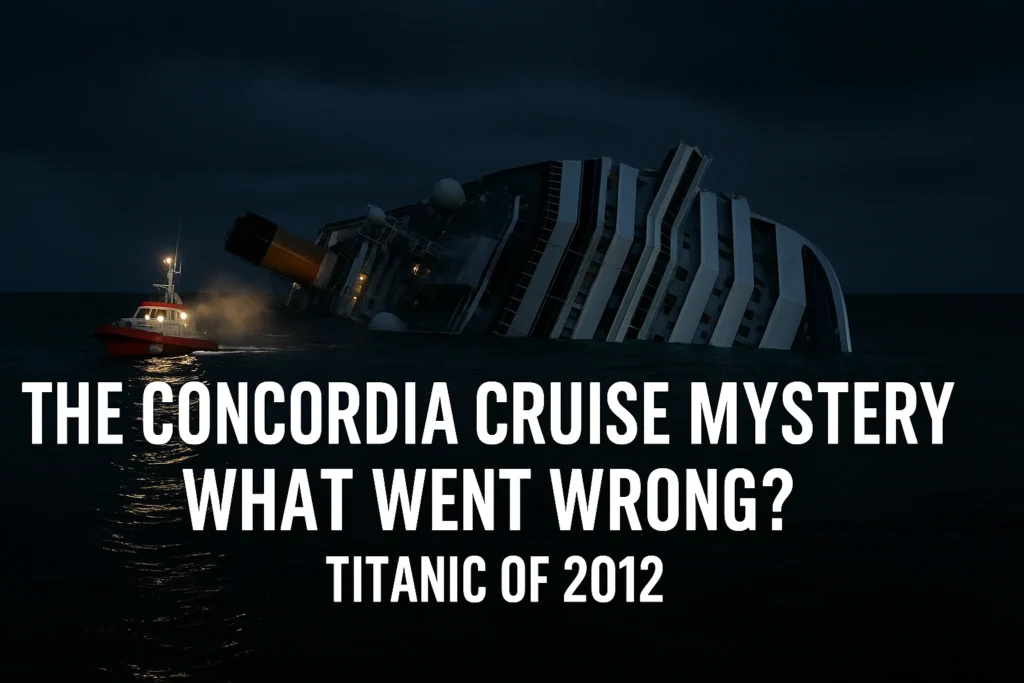The night of January 13, 2012, was supposed to be filled with laughter, music, and the joy of a Mediterranean cruise. Instead, it turned into a nightmare for the 4,229 passengers and crew aboard the Costa Concordia—a floating luxury resort that met a tragic fate just hours after leaving port.
Dubbed the “Titanic of 2012,” the Costa Concordia disaster remains one of the most shocking maritime accidents in modern history. But what really happened that night? Why did this state-of-the-art cruise ship, designed to withstand rough seas, end up capsized off the coast of Italy?
This is the story of human error, heroism, and survival—a chilling reminder of how quickly paradise can turn into peril.
A Grand Ship with a Deadly Flaw
The Costa Concordia was no ordinary cruise ship. At 951 feet long and weighing 114,500 tons, it was one of the largest and most luxurious vessels of its time. Launched in 2006, it boasted 1,500 cabins, multiple swimming pools, a theater, and even a grand piano bar.
But beneath its glamorous exterior lay a critical weakness—the ship’s design made it vulnerable to flooding if its hull was breached. Unlike the Titanic, which sank due to an iceberg collision in open waters, the Costa Concordia’s fate was sealed by a reckless decision made just a few hundred meters from shore.
The Fateful Decision: A Dangerous Detour
The ship’s captain, Francesco Schettino, had a reputation for showboating. That evening, he decided to perform an unauthorized “salute” maneuver—sailing dangerously close to the tiny island of Giglio to impress passengers and locals.
At 9:45 PM, while many passengers were dining or enjoying onboard entertainment, the ship struck a jagged rock hidden beneath the water. The impact tore a 160-foot gash in the hull, allowing seawater to flood the engine rooms and electrical systems.
“It Was Like a Scene from a Horror Movie”
Eyewitnesses described chaos as the ship suddenly lurched to one side.
- Plates and glasses shattered in the dining halls.
- Lights flickered before going out completely.
- Water rushed into lower decks, trapping some passengers in their cabins.
The crew initially downplayed the emergency, telling passengers it was just an “electrical fault.” But within minutes, the ship began listing violently, making escape nearly impossible for many.
Panic and Heroism: The Fight for Survival
As the ship tilted further, lifeboats became unusable on one side. Passengers scrambled in darkness, some jumping into the freezing winter waters to swim to shore.
Key Moments of the Rescue
- Coast Guard’s Urgent Orders: Captain Schettino delayed evacuation for over an hour, claiming the ship was only experiencing a “blackout.” The Italian Coast Guard famously yelled at him: “Get back on board, damn it!”
- Local Fishermen Join Rescue: Giglio’s residents rushed to help, using small boats to pull survivors from the water.
- Last Survivor Found: A Korean crew member, trapped in an air pocket, was rescued 36 hours after the ship capsized.
Despite the chaos, most passengers survived. But 32 people lost their lives, many trapped inside the sinking vessel.
Why Did the Costa Concordia Sink? The Fatal Mistakes
Investigations revealed a chain of failures:
- Captain’s Recklessness: Schettino ignored safety protocols, taking an unapproved route too close to shore.
- Delayed Evacuation: The crew waited 70 minutes before ordering an evacuation, wasting precious time.
- Design Flaws: The ship lacked watertight compartments, allowing flooding to spread rapidly.
- Failed Emergency Systems: Backup generators didn’t work, leaving the ship in darkness.
Schettino was later convicted of manslaughter and sentenced to 16 years in prison.
The Aftermath: A Ship’s Final Resting Place
The wreckage lay partially submerged for two years before a $1.2 billion salvage operation (the most expensive in history) righted and removed it. The ship was finally scrapped in 2017, but the scars of that night remain.
Lessons Learned from the Tragedy
The Costa Concordia disaster led to stricter maritime laws, including:
✔ Mandatory lifeboat drills before departure
✔ Better crew training for emergencies
✔ Improved ship stability designs
Final Thoughts: A Night the World Won’t Forget
The Costa Concordia serves as a haunting reminder that even the most advanced ships are no match for human error. While most passengers survived, the tragedy exposed gaps in cruise safety that the industry is still addressing today.
Would better regulations have prevented this disaster? Perhaps. But one thing is certain—the “Titanic of 2012” will forever be a warning of what happens when complacency meets catastrophe at sea.
Would you have survived the Costa Concordia disaster? Share your thoughts in the comments!



